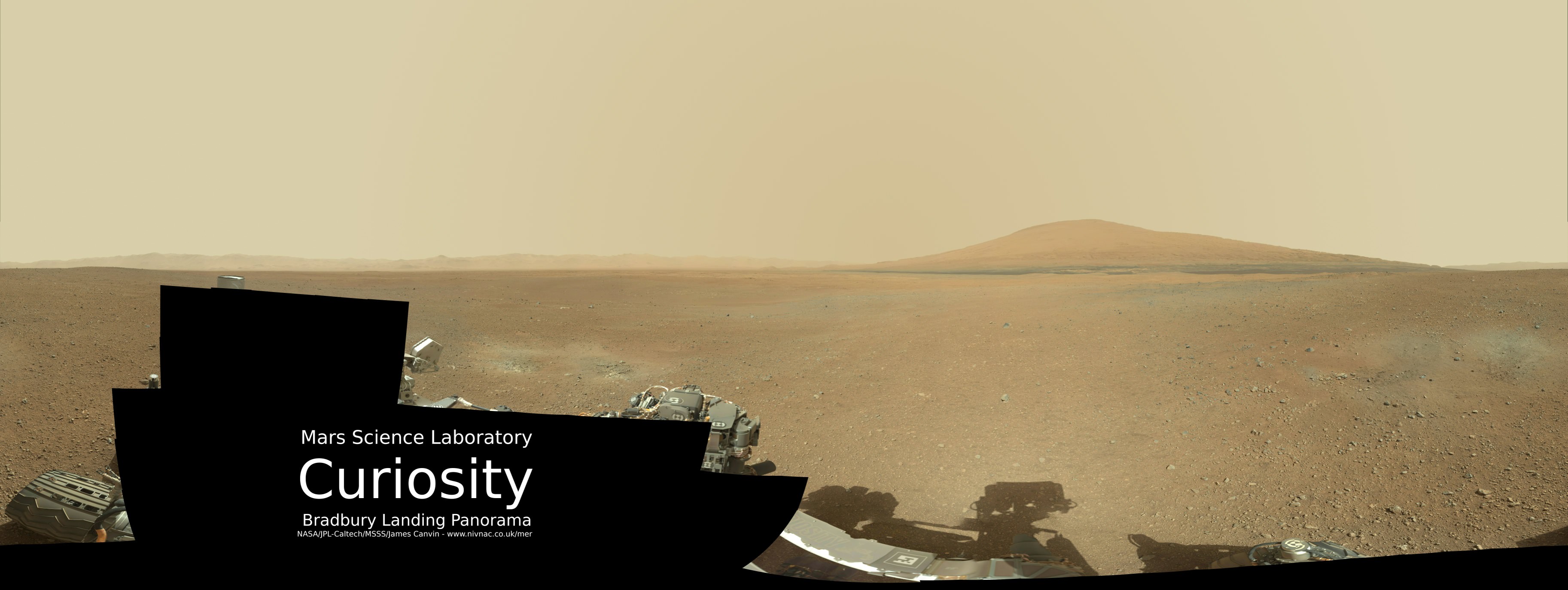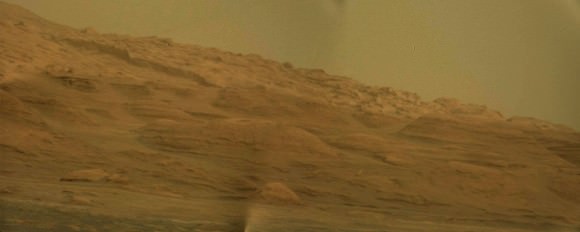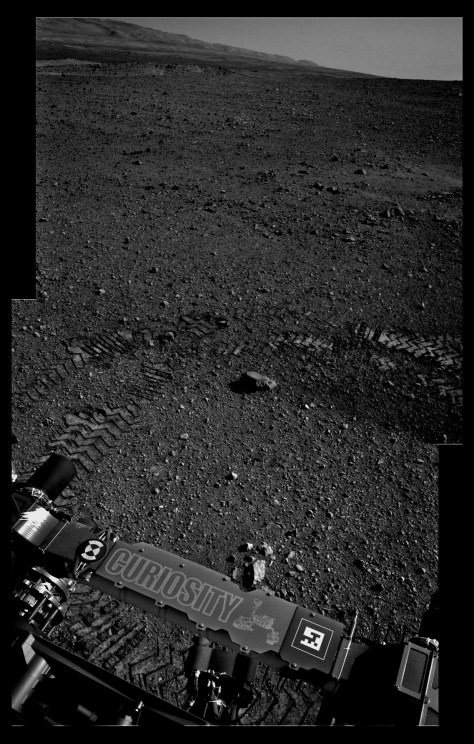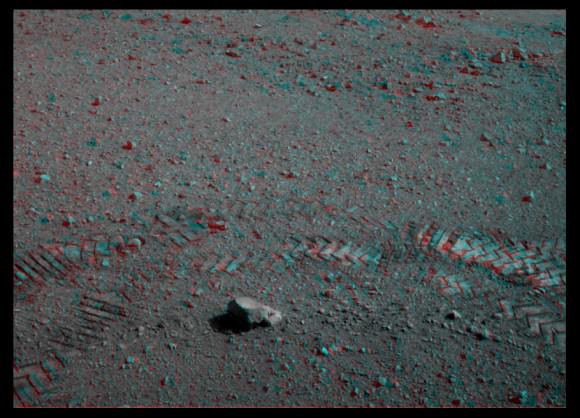Bradbury Landing color panorama. Credit: NASA/JPL-Caltech/Malin Space Science Systems. with image editing by James Canvin.
The image editing wizards at UnmannedSpaceflight are having a field day with all the sensational views being sent back by the Curiosity rover. Above is a beautiful color 360-degree panoramic view edited by James Canvin of the newly named “Bradbury Landing,” Curiosity’s landing place. The view of Aeolis Mons (Mount Sharp) is simply stunning, along with parts of (and shadows of) the rover itself. Click on the image to have access to larger views. James said he added the latest downloads from Curiosity in order to show the top of Aeolis Mons, and extended the sky to make the view complete.
See more views, below:
Aeolis Mons/Mount Sharp. Credit: NASA/JPL-Caltech/image editing by Stuart Atkinson
Here’s a view focusing on just Aeolis Mons by Stuart Atkinson at his wonderful Gale Gazette website, which highlights Curiosity’s latest explorations. He said he “boosted” the colors “just a bit, to bring out some detail.” Click on any of these images to see larger versions from Stu to see more detail — one could spend hours looking at the all the features! And presumably, the MSL science team is doing just that!
And there’s more detail from another image enhanced by Stu, a closeup of one part of the huge mountain in the center of Gale Crater, Curiosity’s ultimate destination for exploration:
The “Promised Land” at the base of Aeolis Mons. Credit: NASA/JPL-Caltech/image editing by Stuart Atkinson
Just look at this intriguing area of mesas and buttes that Curiosity will one day, hopefully be able to explore!
A view of Curiosity and the first tracks left by this rover on Mars. Credit: NASA/JPL-Caltech.
Now it’s time to grab your 3-D glasses to appreciate a the great view from Curiosity!
3-D view of Curiosity’s tracks. NASA/JPL-Caltech/image editing by Stuart Atkinson
3-D view of wheel tracks left by the Curiosity rover on Mars, as captured by the rover’s hazard avoidance cameras. Credit: NASA/JPL-Caltech/Stuart Atkinson
Thanks to Stuart and James and all the UnmannedSpaceflight image editing wizards for providing us all a better appreciation of the location and views from Curiosity’s new science spot. We look forward to more images as they become available! You can see all the raw images straight from Curiosity here.







I left my 3D glasses in the cinema… 🙁
Absolutely exceptional! Stunning detail. Hours may well be spent (but not lost) viewing these.
Nancy, thanks also for the line, “The view of Aeolis Mons (Mount Sharp)”. Much debate on this and other sites on the name/s of this feature. It is nice to see you using both currently accepted names in the that order and with use of parentheses.
Great photos but some color corrections are needed,those that are seen now are not the true colors. Color corrected photos from Spirit/Opportunity show a bluish sky, along with more detailed surfaces. Right now, these are raw footage.
If you get a chance, listen in to Emily’s talk about WHY color corrections are the way they are.. or aren’t made. There’s more to it than meets the eye!
Emily’s blogs can be found at: http://www.planetary.org/blogs/
First of all I would like to say thank you to Aqua4U. When I was growing up, the highlight of my day was watching Bill Nye the Science Guy. Now, with planetary.org I can continue to learn from him. Thank you Aquaman for introducing me to planetary.org. Secondly, I think I almost prefere the black and white images after reading Emily’s blog. Leave it to engineers to bungle some thing as simple as color. Here’s an idea, if the eye is most sensitive to green light let’s make our cameras most sensitive to green light so when we decode the images they have a massive green bias. OR you could make the cameras equally sensitive to red, green and blue and let your eyes do the rest.
I heard Emily and Frazier talk about how the summit of Aeolis Mons is actually higher than the crater rim(s) on Astronomy FM. A GREAT chat! The images above ‘dovetail’ exactly into that conversation because they show better than ever the layered strata Curiosity will attempt to decipher. Thanks Nancy, Stuart and James! Thanks Emily and Frazier! YOU GUYS ROCK!